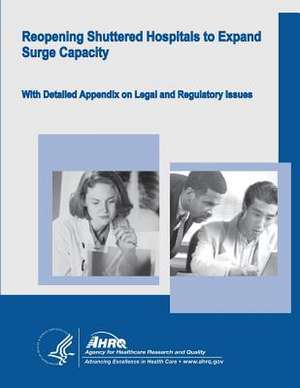Reopening Shuttered Hospitals to Expand Surge Capacity
Autor U. S. Department of Heal Human Services, Agency for Healthcare Resea And Qualityen Limba Engleză Paperback
Preț: 156.29 lei
Preț vechi: 164.51 lei
-5% Nou
Puncte Express: 234
Preț estimativ în valută:
29.91€ • 32.48$ • 25.12£
29.91€ • 32.48$ • 25.12£
Carte disponibilă
Livrare economică 01-15 aprilie
Preluare comenzi: 021 569.72.76
Specificații
ISBN-13: 9781499671759
ISBN-10: 149967175X
Pagini: 206
Dimensiuni: 216 x 279 x 11 mm
Greutate: 0.49 kg
Editura: CREATESPACE
ISBN-10: 149967175X
Pagini: 206
Dimensiuni: 216 x 279 x 11 mm
Greutate: 0.49 kg
Editura: CREATESPACE
